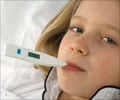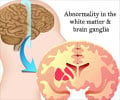A evidence-based approach for initial drug therapy has been established by the first comprehensive comparative effectiveness clinical trial of three widely used anti-seizure drugs
A evidence-based approach for initial drug therapy has been established by the first comprehensive comparative effectiveness clinical trial of three widely used anti-seizure drugs for childhood absence epilepsy.
Published March 4 in the New England Journal of Medicine, data from the double-blind, randomized, comparative clinical trial fill a large information gap in the treatment of childhood absence epilepsy, also known as "petit mal" epilepsy. The research, which identifies important differences between drugs in seizure control and side effects, is expected to impact how physicians select and monitor initial therapy for children with the disorder and ultimately lead to improved outcomes."Involving 453 children, 32 U.S. medical centers and the National Institutes of Health, this landmark study establishes clinically important differences between the three medications most commonly used as initial therapy for childhood absence epilepsy," said Tracy A. Glauser, M.D., the study''s lead investigator and director of the Comprehensive Epilepsy Center at Cincinnati Children''s Hospital Medical Center.
Although childhood absence epilepsy is common, the comparative efficacy and tolerability of initial therapy with ethosuximide, valproic acid or lamotrigine had not been comprehensively or rigorously assessed in patients until the current clinical trial. The study is the largest pediatric epilepsy clinical trial ever funded by the National Institute of Neurological Disorders and Stroke (NINDS), of the National Institutes of Health.
"Although childhood absence epilepsy is often perceived as a benign form of epilepsy, many affected children have cognitive deficits and long-term psychosocial difficulties. This study helps physicians and families make informed choices about how to approach its treatment," said Deborah Hirtz, M.D., a co-author of the study and a program director at NINDS.
The research team found that ethosuximide provided the best combination of seizure control and fewest attentional side effects over the initial 16- to 20-week period after starting therapy. The researchers concluded ethosuximide - one of the oldest available anti-seizure medications in the U.S. - is the "sensible choice for initial monotherapy in childhood absence epilepsy."
Children were eligible for the study if they were between 2.5 and 13 years, had newly-diagnosed childhood absence epilepsy and were free of other medical conditions, such as autism or developmental delay. Once enrolled, children were randomly assigned to take ethosuximide (156 children), valproic acid (148) or lamotrigine (149). Children, their parents and the clinical sites were all blinded to which study medication each child was taking. Study medication doses were incrementally increased until the child was either seizure free (both clinically and by a one hour video electroencephalogram, EEG) or the child reached the maximal allowable or highest tolerated dose.
Advertisement
The study''s secondary outcome examined how the study medications affected attentional abilities in these children. Attentional abilities were measured using the Confidence Index score from the age appropriate computerized Conners'' Continuous Performance Test. Attention dysfunction was defined a Confidence Index of 0.60 or higher. The Confidence Index provides a confidence level that suggests closeness of the match to a clinical or nonclinical profile of attention deficit. An index of 0.60 corresponds to a 60 percent probability that the child has a clinically significant attention disorder.
Advertisement
Although the clinical trial establishes a rational evidence-based approach for initial drug therapy, the researchers are careful to point out that "even the best empirical therapy fails in almost 50 percent of newly diagnosed cases." Also, as patients with childhood absence epilepsy grow into adolescence, they are at risk to develop tonic-clonic ("grand mal") seizures, which are resistant to treatment by ethosuximide.
"The results of this clinical trial answer important decades old questions and raise new ones" explained Dr. Glauser, also a professor of pediatrics at the University of Cincinnati College of Medicine. "We want to know why specific patients respond differently to different drugs, how we can improve our overall rate of success with initial therapy, and whether those medications that work best in the short-term continue to be the best choice over the long-term."
According to the Epilepsy Foundation, 45,000 children in the United States under the age of 15 develop epilepsy every year. An estimated 10 to17 percent of those cases involve childhood absence epilepsy, an epilepsy syndrome in which seizures can occur dozens to hundreds of times per day. The seizures consist of sudden loss of awareness as children stop activities and stare blankly into space for 10-30 seconds. Children suffering these seizures can be unresponsive to voice and often display flickering eyelids, lip smacking or other non-voluntary movements.
About Cincinnati Children''s
Cincinnati Children''s Hospital Medical Center is one of 10 children''s hospitals in the United States to make the Honor Roll in U.S. News and World Reports 2009-10 America''s Best Children''s Hospitals issue. It is #1 ranked for digestive disorders and is also highly ranked for its expertise in respiratory diseases, cancer, neonatal care, heart care, neurology/neurosurgery, diabetes, orthopedics, kidney disorders and urology. One of the three largest children''s hospitals in the U.S., Cincinnati Children''s is affiliated with the University of Cincinnati College of Medicine and is one of the top two recipients of pediatric research grants from the National Institutes of Health.
President Barack Obama in June 2009 cited Cincinnati Children''s as an "island of excellence" in health care. For its achievements in transforming health care, Cincinnati Children''s is one of six U.S. hospitals since 2002 to be awarded the American Hospital Association-McKesson Quest for Quality Prize for leadership and innovation in quality, safety and commitment to patient care. The hospital is a national and international referral center for complex cases. Additional information can be found at www.cincinnatichildrens.org.
Source-Newswise
RAS














